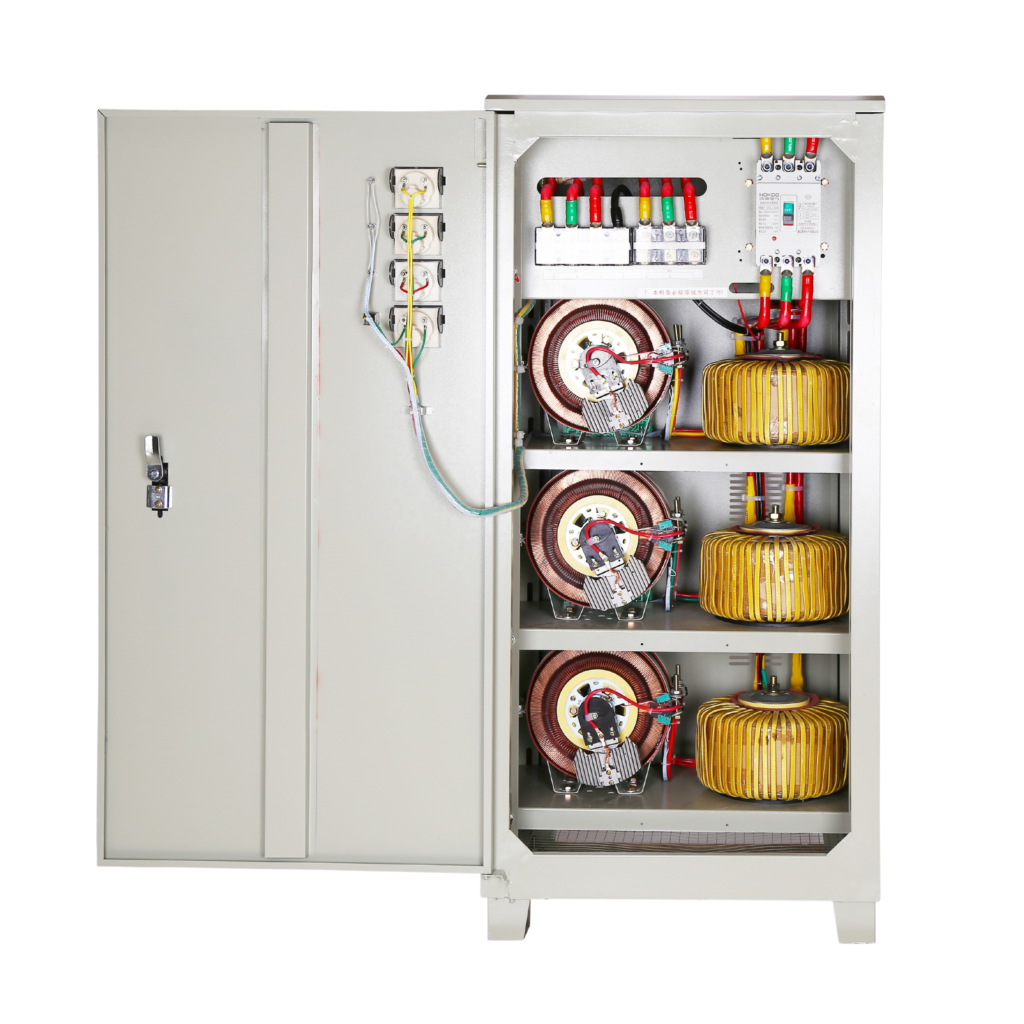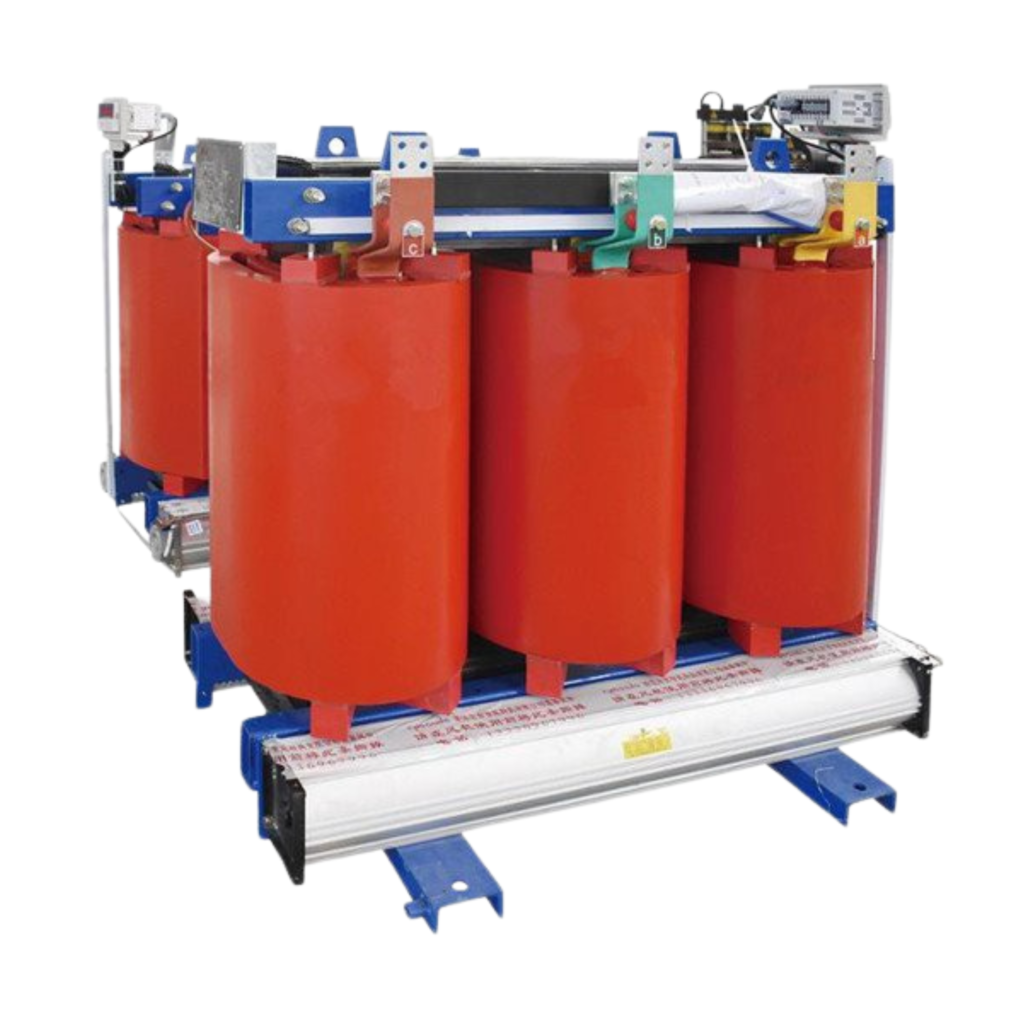A Dry Type Automatic Voltage Regulator (AVR) is a device used to maintain a constant output voltage level regardless of variations in input voltage or load conditions. It is primarily designed for use with generators and other electrical equipment to ensure a stable supply of voltage. The “dry type” refers to the fact that the AVR does not require liquid (such as oil or coolant) for cooling, unlike certain liquid-cooled models.
Principle of Operation:
The AVR regulates the output voltage by sensing the generator’s terminal voltage. It then adjusts the excitation current supplied to the generator’s field windings, which ultimately controls the output voltage. When the generator’s voltage deviates from the set value, the AVR detects this and makes necessary adjustments in real-time to correct the deviation.
Components:
- Sensing Circuit: Measures the output voltage and detects any variation.
- Control Circuit: Processes the sensing data and decides on the correction needed.
- Excitation Control: Modulates the excitation current to the generator’s field windings.
- Power Supply: Typically designed to work in parallel with the generator’s electrical supply.
Key Features:
- Compact Design: Smaller and lighter than wet-type AVRs, which makes them suitable for smaller systems.
- No Need for Cooling Liquids: As the name suggests, dry-type AVRs don’t require external cooling like oil or water.
- High Reliability: They are robust and designed for continuous operation in challenging environments.
- Low Maintenance: They have fewer moving parts and require less maintenance compared to other types of AVRs.
- Efficient Voltage Regulation: They offer precise regulation, ensuring the voltage stays within acceptable limits even with load variations.

Technical Specifications of Dry Type AVR:
- Input Voltage Range: Typically, the AVR can handle a wide range of input voltages, for example, 190-250V, depending on the system.
- Output Voltage Regulation: The AVR generally offers a tight voltage regulation, usually within ±1% of the nominal output voltage.
- Frequency Range: Most dry-type AVRs are designed to work with standard frequencies, such as 50Hz or 60Hz, depending on the geographical region.
- Voltage Accuracy: The AVR is designed to maintain voltage within tight tolerances, typically ±1% to ±5%.
- Temperature Range: The AVR operates effectively within a certain ambient temperature range, usually between -10°C to 60°C.
- Excitation Control Method: It uses electronic regulation to control the excitation current to the generator’s field windings.
- Response Time: Dry-type AVRs have a fast response time, generally in the order of milliseconds, ensuring quick voltage correction.
- Overload Protection: Some AVRs come with built-in protection mechanisms, such as overload and short-circuit protection, to safeguard both the AVR and the generator.
- Mounting: Dry-type AVRs are typically designed for either panel or frame mounting, depending on the application.
- Output Voltage Range: The AVR typically regulates output voltage between 110V to 480V for single-phase and three-phase systems, depending on the model and application.
Applications:
- Small to Medium-Sized Generators: Especially useful in industries where stable voltage is critical, such as small power stations, backup generators, and portable power supplies.
- Industrial Equipment: Used in machines and systems requiring steady voltage for their proper operation.
- Renewable Energy Systems: Can be used to regulate voltage in off-grid or hybrid solar or wind power setups.
Advantages of Dry Type AVR:
- Low Cost: The design is simpler and cheaper compared to liquid-cooled models.
- Less Maintenance: No need for regular refilling or maintenance of cooling fluids.
- Compact & Lightweight: Easier to install in smaller, confined spaces.
- Durability: High reliability and long service life due to fewer moving parts.

Conclusion:
Dry Type AVRs are an excellent choice for systems requiring consistent voltage regulation with minimal maintenance and a compact form factor. Their simplicity, reliability, and efficiency make them a popular choice for various commercial and industrial applications.
